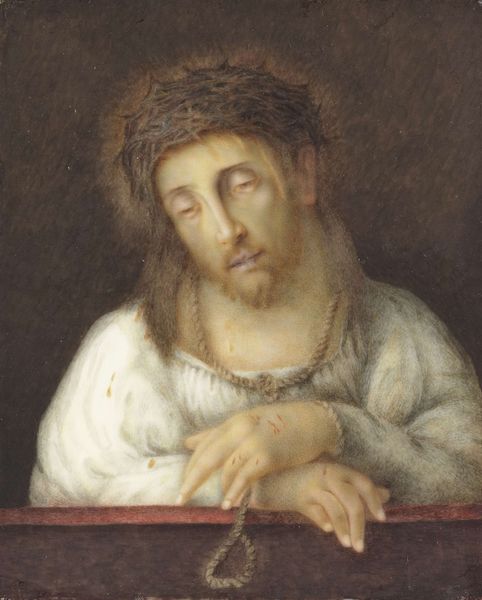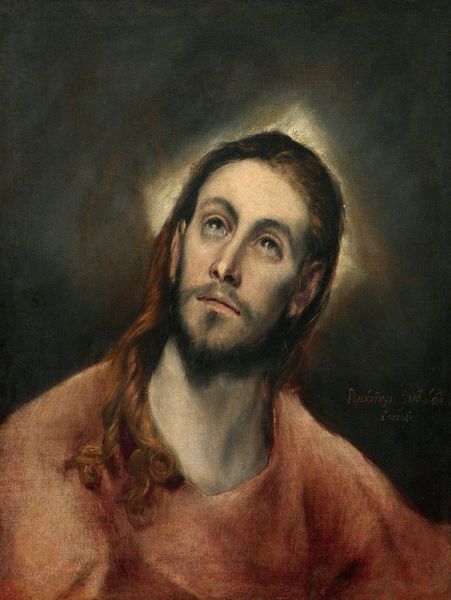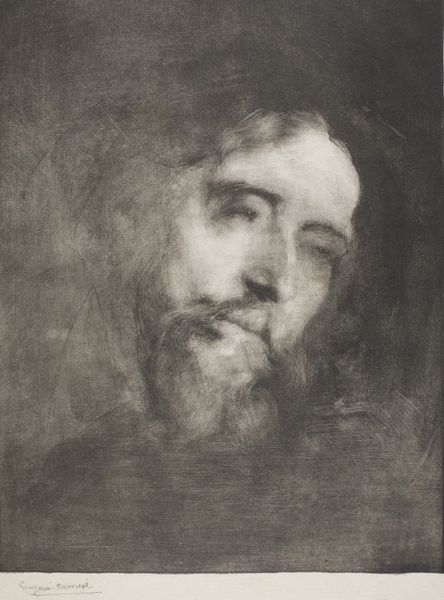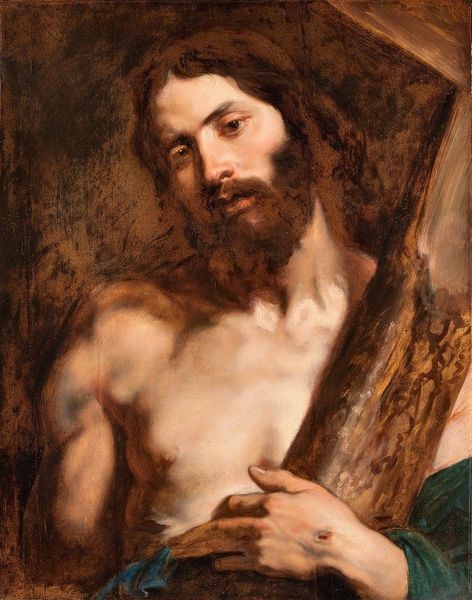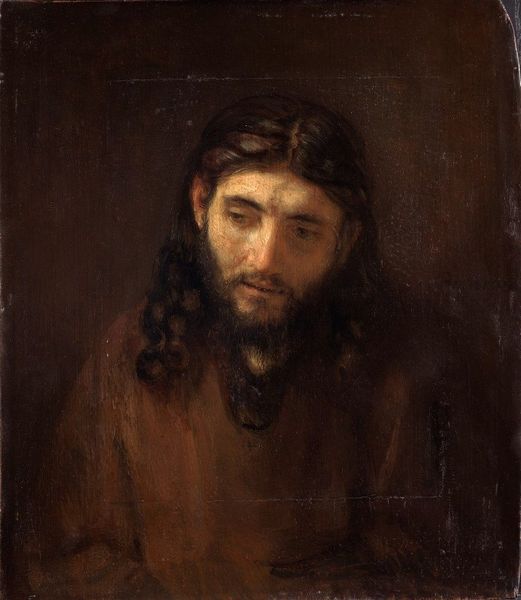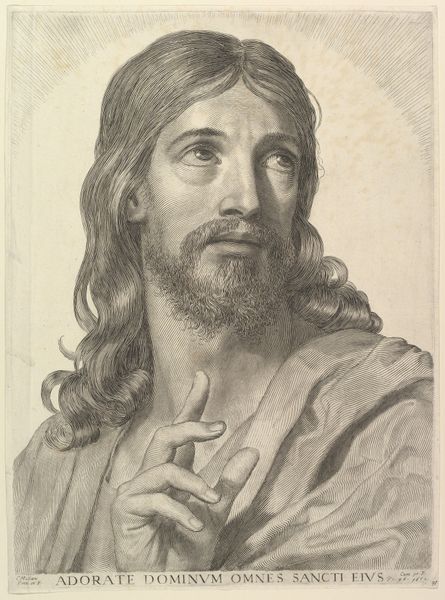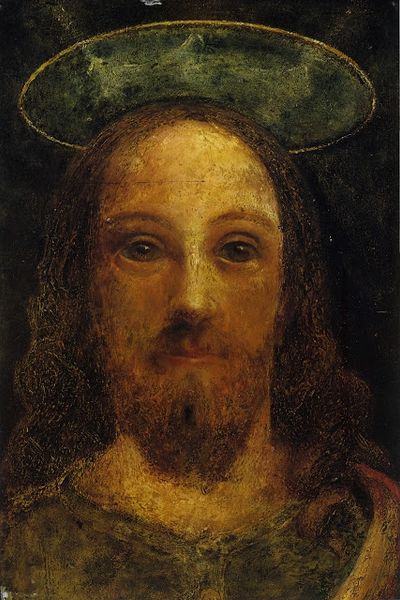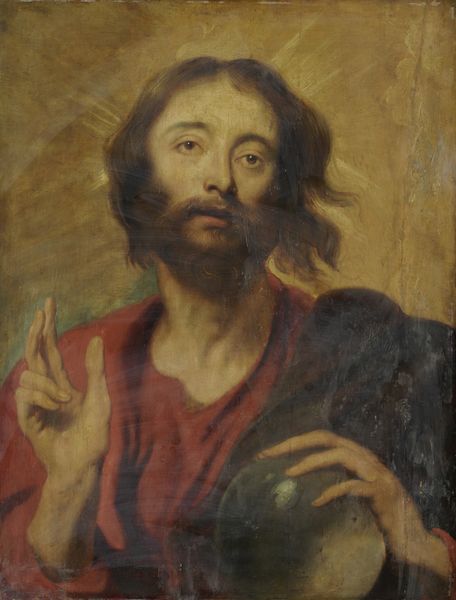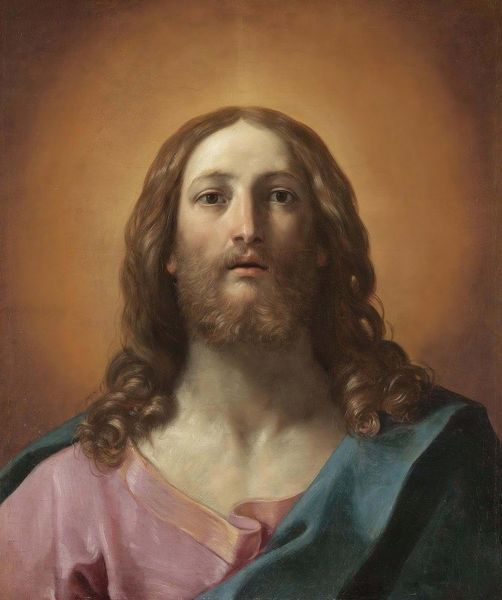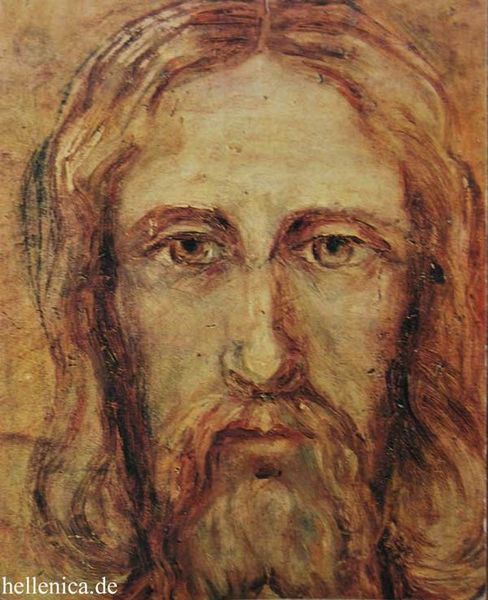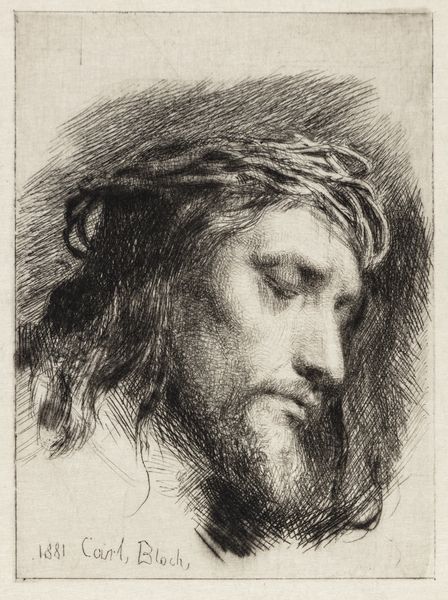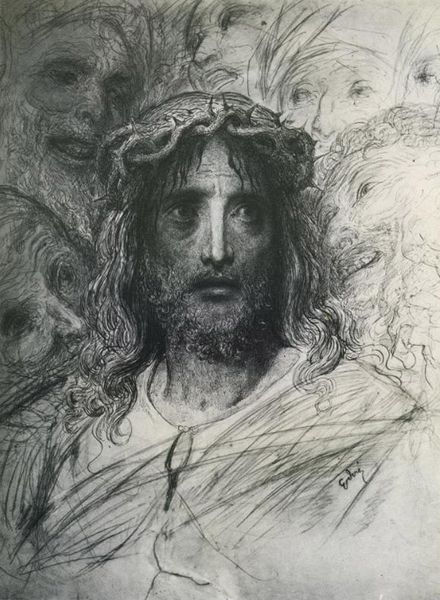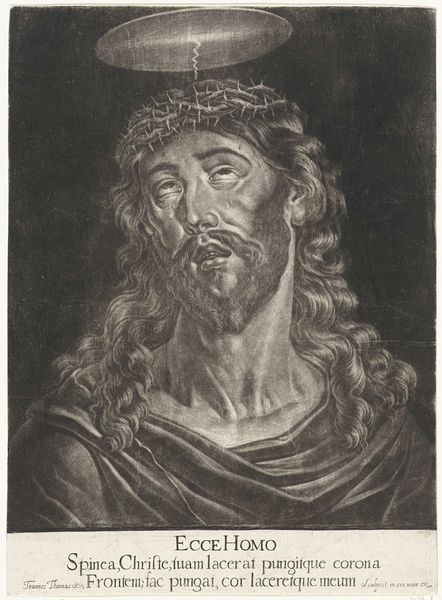
painting, oil-paint
#
portrait
#
baroque
#
dutch-golden-age
#
painting
#
oil-paint
#
figuration
#
oil painting
#
portrait reference
#
portrait head and shoulder
#
underpainting
#
animal drawing portrait
#
portrait drawing
#
history-painting
#
realism
Copyright: Public domain
Editor: We're looking at Rembrandt van Rijn's "Christ with Arms Folded," painted in 1661 using oil on canvas. The muted colors and the way light illuminates Christ's face create a somber, introspective mood. How do you interpret this work, considering Rembrandt’s artistic and historical context? Curator: It’s tempting to view this image through a purely devotional lens, but I think we need to unpack the layers of social and political meaning present here. Consider Rembrandt's position in 17th-century Netherlands, a society wrestling with religious reform and evolving notions of individual identity. How might his portrayal of Christ – as a man, marked by an individual humanity rather than divine remove – speak to these contemporary tensions? What is he trying to tell us? Editor: That's interesting. So you're suggesting this isn't just a depiction of Jesus, but maybe a commentary on the individual's role within society and religion? Curator: Precisely! This painting challenges the grandiose, authoritarian imagery often associated with religious power. By humanizing Christ, Rembrandt invites viewers to question established doctrines and find spiritual truth in lived experience. What kind of politics do you see expressed here through his use of chiaroscuro, that striking contrast between light and shadow? Editor: The darkness surrounding Christ really emphasizes his face, his expression, almost as if he's isolated, maybe even burdened. Curator: Yes! And this very use of darkness itself can be a commentary. Consider how notions of ‘darkness’ and ‘light’ have been used to establish hierarchies, to define marginalized groups throughout history. Does Rembrandt's interplay with these symbolic concepts potentially subvert the prevalent understanding and the period’s use of darkness as 'evil'? Editor: Wow, I never thought of it that way. Looking at the work now, it feels much more radical than I initially perceived. Curator: Indeed. By bringing our understanding of history, philosophy, feminist theory and social struggles to these works, they are not so old at all. What appeared like a subdued religious painting unveils itself as a vibrant challenge against prevailing biases of the time. Editor: I'll definitely look at Rembrandt and other works of this era with a broader, more critical lens going forward. Thank you!
Comments
No comments
Be the first to comment and join the conversation on the ultimate creative platform.
